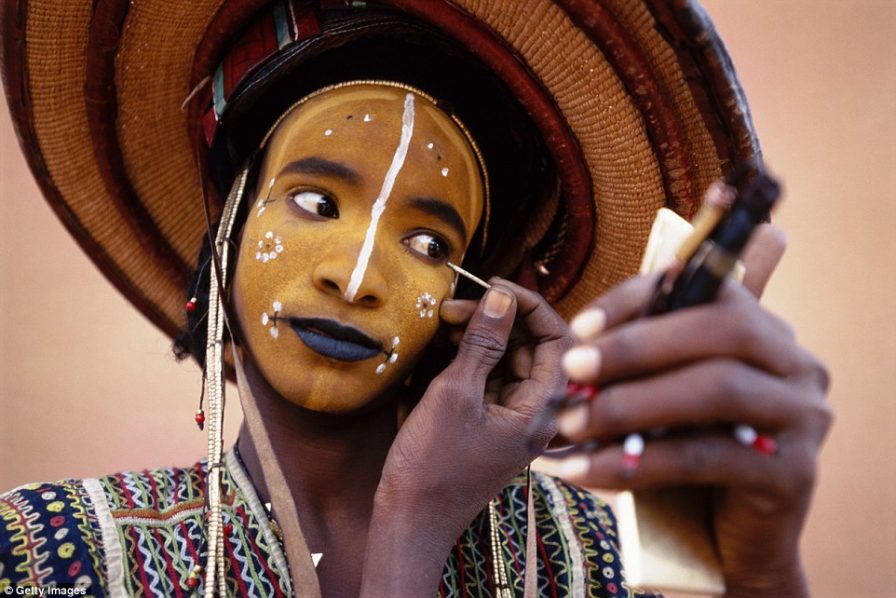Indigenous Cultures of Africa
As the world becomes a global village, we undergo a process that is greatly inspired by disruptive technology. Obviously, this is the beginning of the evolution of a culture very different from the ones of old as this new culture unifies despite boundaries. As we spotlight unique cultural practices by some of these indigenous cultures, we are reminded of the threat to their existence as cited by Minority Rights Groups International due to industrialisation, urbanisation, mass migration but to mention a few.
Can we use the tools of technology to preserve the culture of old?
Co-Director for the National Geographic Society’s Cultural Ethnosphere Program and contributing editor for National Geographic Traveler magazine, Chris Rainier says in his seminar on Cultures on the Edge, “Here we are deep in the 21st century, let us take one last look over our shoulder at the millennium behind us. What cultural traditions do we live behind and which ones do we carry with us into this new century of technology, information and profound cultural choices?”
Modern ideologies have creeped into the community of Umoja as tourism and photography has become a tool of preservation as it captures and celebrate the unique practices of the Karo and Wodaabe people.
The Umoja Women
Feminism reached Samburu in Northern Kenya which had a strict rule of patriarchy for over 500 years up until 1990 when Umoja (Unity in Swahili), an all-female matriarch community was founded by a group of 15 women – survivors of rape by local British soldiers. Rebecca Lolosoli the founder of Umoja and the village matriarch came up with the idea of the community whilst recovering from a beating by a group of men for her attempt to enlighten the women in the village of their right. From inception, the community has expanded to include women escaping domestic violence, rape, female genital mutilation (FGM), child marriage which are all accepted norms of Samburu.

Over the years, similar communities such as Nachami, Supalake and Nang’ida have risen to accommodate women who no longer want to suffer at the hands of men and the culture which seems to empower them. The women of these communities take security shifts and earn their living from selling handmade jewellery to tourists.
Wodaabe Male Pageantry
The Wodaabe people are a small subgroup of the Fulani ethnic people, who originated as nomadic cattle-herders and traders in the Sahel and have migrated through northern Nigeria, northeastern Cameroon, southwestern Chad, and the western region of the Central African Republic. Annually, the Wodaabe travel to In-Gall to gather salt and participate at the Cure Salée festival, a meeting of several nomadic groups. It is at this gathering that the Wodaabe men with elaborate makeup, feathers and other adornment engage in singing and dancing the Yakee in a line (a typical Fura tradition which is slowly disappearing) in the week-long Guérewol celebration, a contest where the young men’s beauty is judged by young women for marriage purposes.

The ideal beauty for men in Wodaabe focus on height, white eyes and teeth so the men make sure they emphasise these characteristics as they come as suitors to prove their interest, stamina and attractiveness.
Chalks and Ochre of the Karo
Highlights and contour of the modern world equal the chalks and ochre of the Karo people whose culture include body painting, scarification and unique standard of beauty. They live on the east bank of the Ethiopia’s Omo River and according to American photographer who sought out the tribe to capture their tribal makeup are a “…highly aesthetic group of people. Their styles are often symbolic of important festivities or as a means of attracting the opposite sex.”

The Karo people predominantly practice flood retreat cultivation, growing sorghum, maize, and beans. They also fish and breed cattle and goats. For the Karo people, beauty is an intricate part of their culture as the women practice scarification (marking themselves with razors to create intricate patterns), putting red ochre to their hair and painting their body with white chalk to seem more attractive. On the other hand, the men cover their body and face with white chalk mixed with fat to boost sexual appeal, show off during guest visits, purely aesthetic reasons or during conflict with other clans.
Comments
Post a Comment